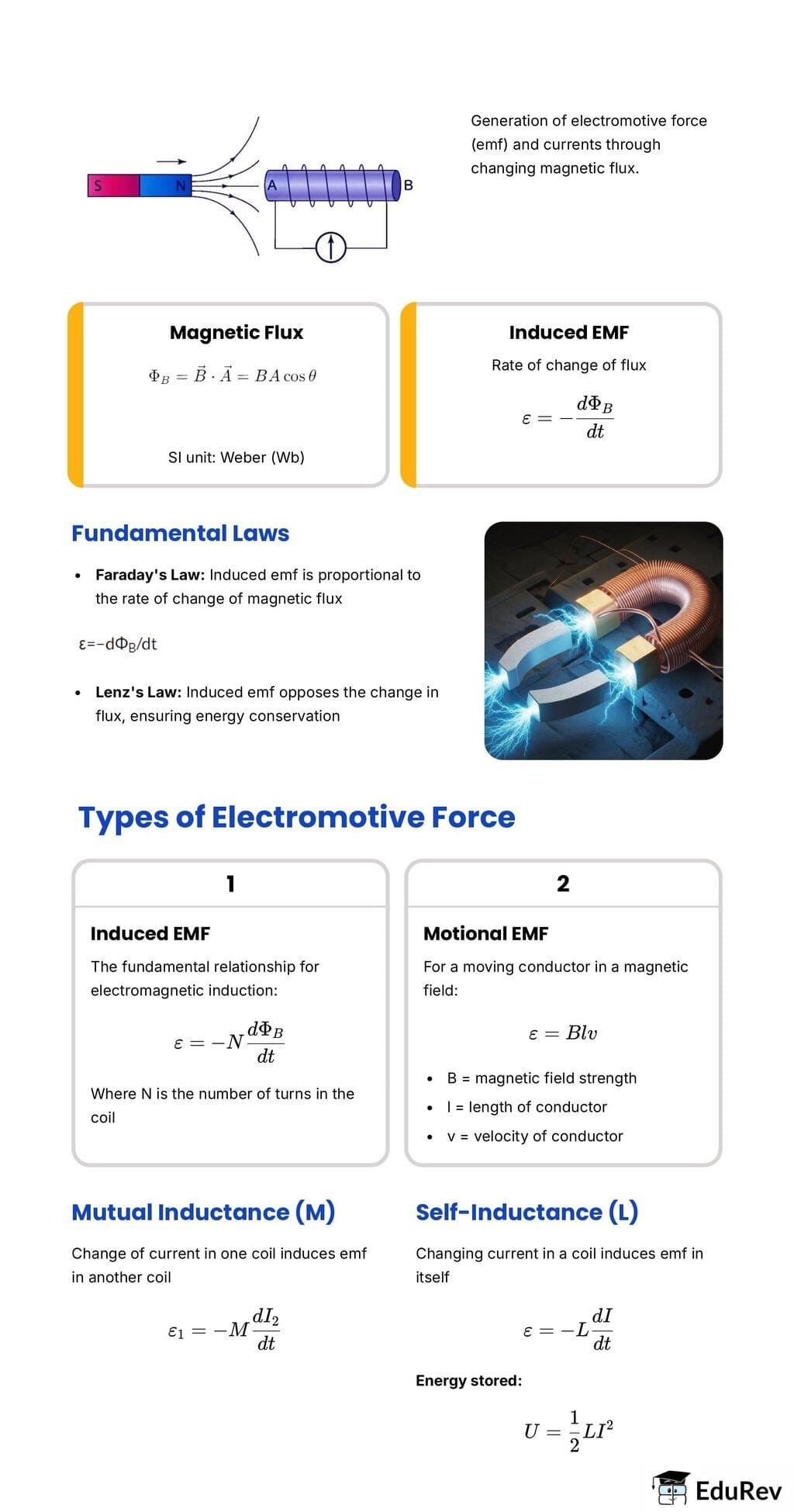JEE Exam > JEE Notes > Physics for JEE Main & Advanced > Infographic: Electromagnetic Induction
Infographic: Electromagnetic Induction | Physics for JEE Main & Advanced PDF Download

The document Infographic: Electromagnetic Induction | Physics for JEE Main & Advanced is a part of the JEE Course Physics for JEE Main & Advanced.
All you need of JEE at this link: JEE
|
268 videos|756 docs|171 tests
|
FAQs on Infographic: Electromagnetic Induction - Physics for JEE Main & Advanced
| 1. What is electromagnetic induction and how does it work? |  |
Ans.Electromagnetic induction is the process by which a changing magnetic field induces an electromotive force (EMF) in a conductor. This phenomenon is governed by Faraday's law of electromagnetic induction, which states that the induced EMF is proportional to the rate of change of magnetic flux through a circuit. When a conductor, such as a wire, experiences a change in magnetic field either by moving the conductor through a magnetic field or changing the magnetic field around a stationary conductor, an electrical current is generated.
| 2. Who discovered electromagnetic induction and when? |  |
Ans.Electromagnetic induction was discovered by Michael Faraday in the early 19th century. Faraday conducted his first experiments on electromagnetic induction in 1831, demonstrating that a changing magnetic field could produce an electric current in a nearby circuit. His groundbreaking work laid the foundation for the field of electromagnetism.
| 3. What are the applications of electromagnetic induction? |  |
Ans.Electromagnetic induction has numerous practical applications, including the generation of electricity in power plants through generators, the operation of transformers to change voltage levels, and the functioning of inductive devices such as induction cooktops and wireless charging systems. It is fundamental to the operation of many electrical devices and technologies we use today.
| 4. How does Faraday's law apply to real-world scenarios? |  |
Ans.Faraday's law can be applied in various real-world scenarios such as in electric generators, where mechanical energy is converted into electrical energy by rotating a coil within a magnetic field. It also applies to transformers, which use the principle of electromagnetic induction to increase or decrease voltage levels for efficient power transmission. Understanding this law is crucial for designing and optimizing electrical systems.
| 5. What is Lenz's Law and how does it relate to electromagnetic induction? |  |
Ans.Lenz's Law states that the direction of the induced current in a conductor from electromagnetic induction is such that it opposes the change in magnetic flux that produced it. This law demonstrates the conservation of energy, ensuring that the induced current flows in a direction that resists the change in magnetic field, thereby influencing the design and operation of electrical circuits and devices.
Related Searches















